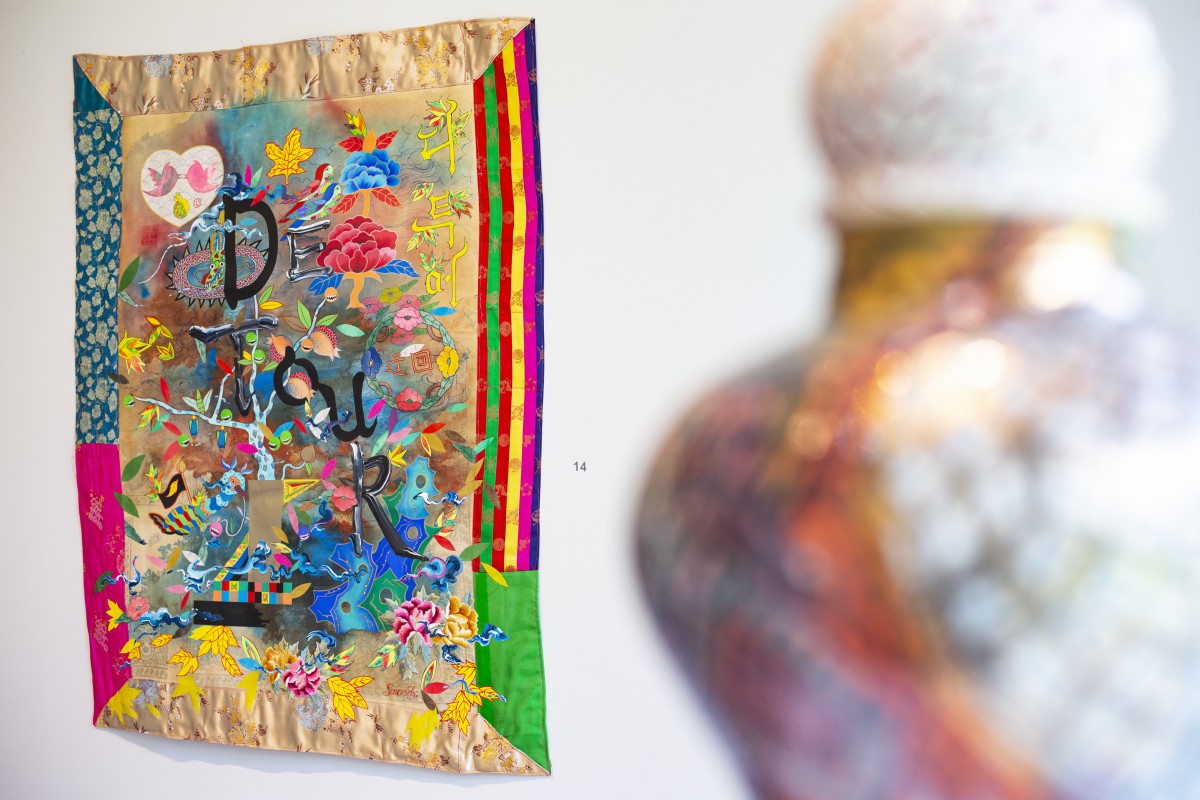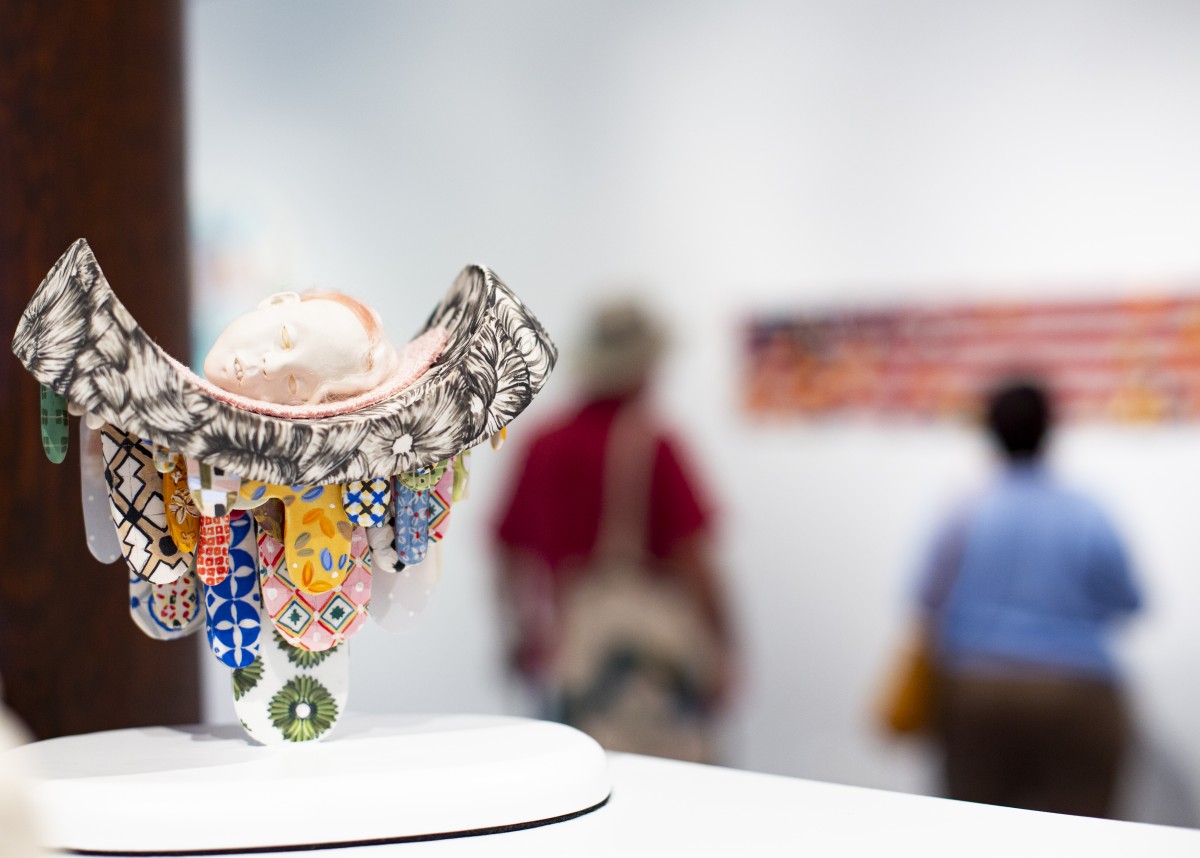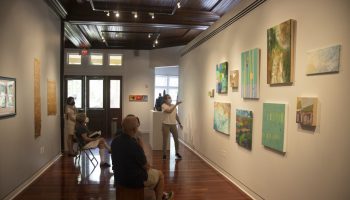For the artists featured in the Visual Arts at Chautauqua Institution’s newest exhibition, art and identity are permanently intertwined.
“Themes in my work have always been about how we create our place within the world,” said ceramist April D. Felipe. “How do we manage our group identity with personal identity? I think we all do that as people, I just look at it through a cultural lens.”
Felipe is one of five artists who have work on “Reconstructing Identities.” The exhibition opens with a reception at 3 p.m. today on the first floor of the Fowler-Kellogg Art Center.
Assistant Director of Galleries Erika Diamond spent a year curating the exhibition. She was inspired by the work of Wendy Red Star, who uses art to celebrate her Native American heritage. Red Star was raised on the Apsáalooke, or Crow, reservation in Montana. Red Star, who will teach at the Chautauqua School of Art this season, has three pieces featured in the exhibition.
“I saw her work and was just completely blown away by the way she was holding up a mirror to the viewer and asking them to reconsider what they think of when they see a portrait of a Native American,” she said, “their perception versus their reality.”
All five artists explore their diverse cultural heritages in what Diamond described as thought-provoking and occasionally humorous ways. Many of their works are mixed media pieces that combine photography, painting, ceramics, collage, quilting, embroidery and more.
“All of the artists are visualizing and reconstructing their personal and cultural identities by deconstructing the stereotypes that are attached to them,” Diamond said. “The way they’re talking about hybridity and the fusion of different cultures — they’re actually doing that through a combination of different mediums as well.”
Felipe was raised in Queens, New York, the child of a Puerto Rican mother and a Dominican father. Her sculptures combine ceramics and embroidery to explore her Caribbean heritage and the long-lasting reverberations of colonialism. She enjoys working with patterns inspired by the painted cement floor tiles common in the Caribbean, tiles created to mimic Spainish styles.
“It’s this faux European tile,” she said. “If you had this, it would be like you’re connecting to your European heritage. But when we look at the history of the patterns of those tiles, they’re from Portugal. And if we look even further back, they are influenced by Northern Africa. I love this idea that this pattern that’s used to look more European, if we historically look at it further, it’s actually linking you to your African heritage.”
Felipe is excited to be featured alongside the other artists in the exhibition.
“I love that our work all feels very different,” she said. “I feel like there’s a place for anyone to connect to it.”
Jiha Moon is a Korean American artist who expresses important issues in a lighthearted and humorous manner.
“If you talk about things like that, it can sound too political or too conceptual,” she said. “It kind of turns off people. That’s why I want to approach people in a very different way.”
Her paintings often feature internationally recognizable symbols, like smiley faces and the logos of companies like Starbucks and Twitter.
Moon pulls inspiration from the colorful, “friendly” aesthetics of Korean, Mexican and American folk art, which she often sees dismissed as women’s or minority work. Two of her pieces in the exhibition represent traditional Korean blankets, with quilted fabric borders that her grandmother helped create.
Moon said she enjoys playing with the perceived conventions of Korean art. She uses acrylic paints — a modern American invention — on Korean hanji paper, which she mounts on traditional European canvas.
“I really like the idea of things becoming more confused and harder to identify,” she said, “because in my experience in this country, people constantly want to identify one way or another. That’s how they feel more comfortable.”
Diamond hopes Chautauquans will leave the exhibition having learned something new.








